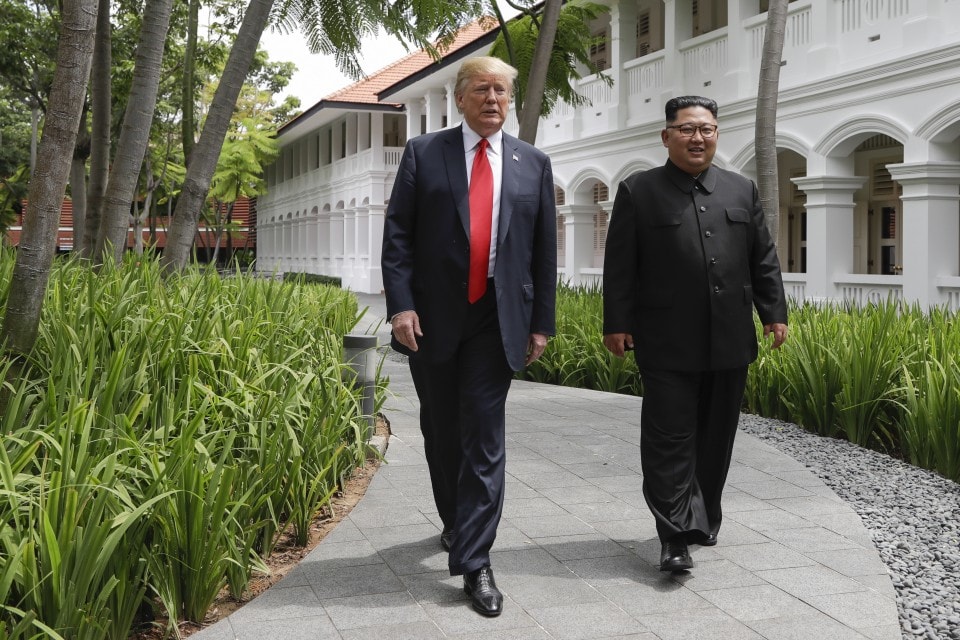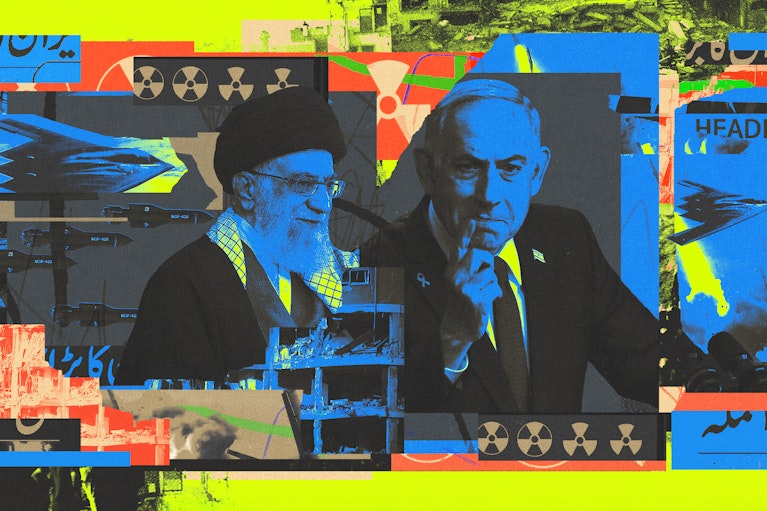Bilahari Kausikan was formerly permanent secretary of Singapore’s Ministry of Foreign Affairs.
SINGAPORE — The summit between U.S. President Donald Trump and North Korean leader Kim Jong Un was something less than the “epochal event” that the joint statement boasted. But the four points of agreement, while brief and broadly phrased, are potentially a game-changing step in their long-term implications.
The joint statement commits the two sides to “establish new U.S.-[North Korea] relations.” It is not clear whether this means the establishment of formal diplomatic relations. But even if new relations fall short of full diplomatic recognition, this in itself is a consequential shift.
Ever since he stepped up the tempo of missile and nuclear tests, the initiative has been with Kim Jong Un — not the United States or China and certainly not Japan or South Korea. Trump deserves credit for seizing the opportunity to get back in the game on level terms when Kim offered an opening. It is now a process of negotiation, not the United States reacting to North Korea.
Comparable to the opening to China
We are only at the very beginning of what will be a long and risky but potentially extremely significant process. East Asia may be on the cusp of a major strategic shift, comparable to the 1972 U.S. opening to China led by then-president Richard Nixon.
It is not a certainty that North Korea will give up all its nuclear weapons. The joint statement reaffirmed the North’s commitment in the Panmunjom Declaration to “work towards complete denuclearization of the Korean Peninsula” and that the United States and North Korea would “join their efforts to build a lasting and stable peace regime on the Korean Peninsula.”
The emphasis of these phrases is as much on process as outcome. There is scope for well-nigh endless discussion on the precise meaning of “denuclearization of the Korean Peninsula” and indeed on the meaning of “a lasting and stable peace regime.”
Diplomatic engagement may end with a peace treaty. But does that require denuclearization in whatever form? Neither the joint statement nor the Panmunjom Declaration make the linkage explicit. That is only one reading of both documents. In any case, is a treaty the best means of ensuring a “stable peace regime?” There is little reason for North Korea to let its survival be hostage to a piece of paper. They are not foolish.
North Korea reacted angrily when some Trump administration officials spoke of the “Libya model.” A better analogy is the Budapest Memorandum, in which the five permanent members of the U.N. Security Council gave security assurances that guaranteed Ukraine’s territorial integrity in return for Kiev giving up the nuclear stockpile it inherited from the Soviet Union.
Pyongyang knows what happened to Crimea. It does not trust any major power. This is hardly surprising given North Korea’s tragic history, deeply ingrained memories of which will not be erased by the joint statement.
But even if it does not result in “complete, verifiable and irreversible denuclearization,” building confidence and stabilizing deterrence at lower levels of tension are still goals worth pursuing. The joint statement recognizes that “mutual confidence building can promote the denuclearization of the Korean Peninsula.” Note, however, that the operative word is “can,” not “will.”
The process may eventually be about arms control, not denuclearization. Herein lies a risk, though not one that necessarily will be borne by the United States. The key American interest is getting rid of North Korean intercontinental ballistic missiles that directly threaten the United States, as U.S. Secretary of State Mike Pompeo acknowledged a few weeks ago. This leaves Japan vulnerable.
Japan’s worries
Ever since the Nixon opening to China, Japan has feared being passed over. Trump has assured Japanese Prime Minister Shinzo Abe that Japan’s interests will not be ignored. Japan is nevertheless feeling marginalized and has cause to be nervous, given Trump’s “America First” attitude. Will San Francisco really be sacrificed to save Tokyo?
Even if Japan can be reassured about North Korea, the question cannot be avoided. China is modernizing its nuclear forces and will acquire a more credible second-strike capability against the United States. One way or another, the inherent logic of the situation could eventually lead to Japan acquiring its own nuclear deterrent within the American alliance system. South Korea will follow.
A five-way balance of mutually assured destruction between the United States, China, Japan, North Korea and South Korea could be established in Northeast Asia. Russia and India would be secondary elements of this new Indo-Pacific strategic equation.
This is a seismic geopolitical shift that will freeze Northeast Asia into a multipolar configuration. Getting there is still a long way away and will require wrenching decisions by Japan and South Korea. For the United States and China, the result will not be ideal. But ultimately, this may be the least bad outcome and more stable than the present situation.
The United States will not be indisputably preeminent in a multipolar order. But with the status quo already inexorably changing and freezing, it ensures that the adjustments in power distribution will remain relative, not absolute. The United States will remain a major East Asian actor and the American alliance system will be preserved.
For Beijing, a multipolar East Asian order means giving up the “China Dream” of a hierarchical architecture, with China at its apex. But even before that eventuality, any improvement in U.S.-North Korea relations is cause for nervousness in Beijing.
The joint statement is clearly about U.S.-North Korea bilateral negotiations. China is not even mentioned. Kim ignored China and snubbed President Xi Jinping until he was ready to talk to Trump. China can never be entirely ignored, but it is now relegated to a secondary role.
Still, the joint statement maintains the North as a buffer state. It means a significant reduction in the probability of war, which would jeopardize Chinese Communist Party rule. Beijing will take a deep breath and support it.
Of course, U.S.-North Korea talks could well collapse. But even if they do, there is no returning to the status quo.
Not the six-party talks
This is not the six-party talks redux. North Korea’s nuclear and missile capabilities were rudimentary back then. The joint statement now in effect recognizes North Korea as a de-facto nuclear state and a legitimate partner.
It will be supported by every other country, perhaps even by the United Nations. North Korea is no longer isolated. The summit is a long-delayed acknowledgment by the United States that North Korea is here to stay.
Critics will pounce on this to accuse Trump of legitimizing a brutal regime. This is a foolishly sanctimonious attitude. You deal with whom you must. The alternative is to let the issue drift.
Even if the talks crash, it will be very difficult to impose new U.N. Security Council sanctions. China and Russia have little incentive to go along and every incentive to loosen implementation of existing sanctions.
Kim Jong Un began his rule by proclaiming a byungjin policy of dual military and economic development. Having done enough to declare victory on the first, it was time to turn to the second.
There are already modest improvements in economic conditions and every prospect of more. South Korea seems eager to provide economic assistance. Japan may be compelled to do so. Kim has little incentive to risk his gains by being unduly provocative.
The results of the Singapore summit are not perfect. But Trump has done better than any of his predecessors. To use an over-used phrase, this is a win-win situation, even if the wins are not symmetrically distributed.
For Americans, the key lesson is to not underestimate who you dislike: whether that is Donald Trump or Kim Jong Un.
This was produced by The WorldPost, a partnership of the Berggruen Institute and The Washington Post.





